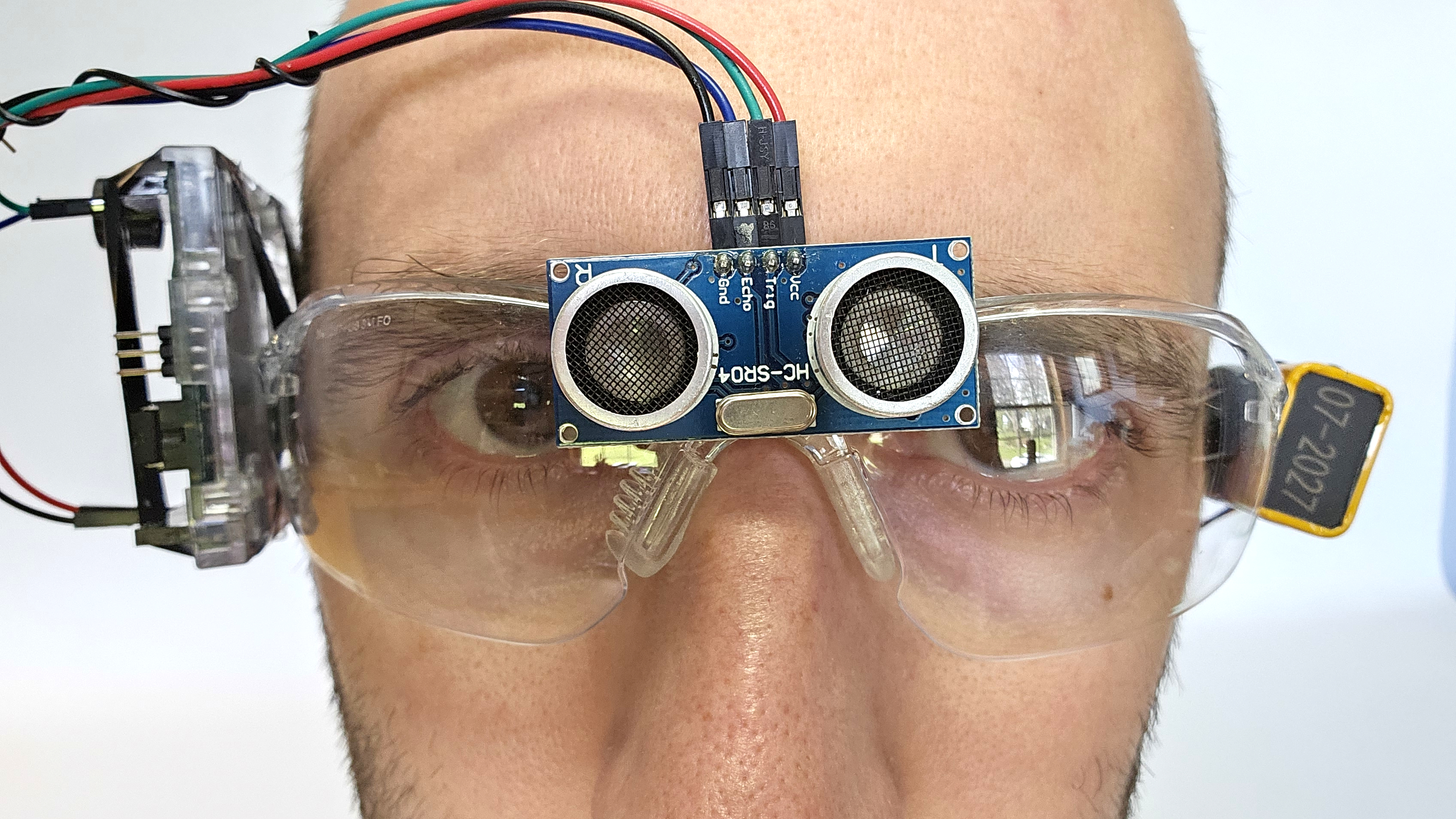The Future of Assistive Technology for the Blind: Empowering Independence
Wiki Article
Discover Advanced Assistive Gadgets for People With Aesthetic Disabilities
The landscape of assistive innovation for individuals with aesthetic impairments is developing quickly, providing a variety of cutting-edge gadgets that enhance autonomy and engagement. From wise glasses that perfectly merge visual input with acoustic guidance to sophisticated navigation applications that redefine spatial understanding, these devices are improving opportunities.Smart Glasses Innovations
Smart glasses stand for a significant improvement in assistive technology for people with visual disabilities. Outfitted with video cameras and sensing units, smart glasses can record real-time visual details, which is then refined and communicated to the individual with audio comments or haptic feelings.
Additionally, improvements in man-made knowledge have additionally boosted the capacities of clever glasses. Device learning algorithms can recognize faces, read text, and recognize items, making them indispensable tools for daily jobs. Customers can receive auditory signs that supply context concerning their environment, cultivating self-reliance and self-confidence.
Furthermore, the ergonomic design and light-weight nature of many clever glasses make them suitable for prolonged use, making sure comfort while boosting capability. As these devices proceed to progress, they hold the possible to reinvent the method individuals with visual problems experience their day-to-days live, bridging the space between availability and technology. The ongoing r & d in this area pledge to increase the possibilities for wise glasses, making them an essential element of modern-day assistive tools.
Navigation Apps and Equipment
Numerous navigating applications and tools have actually arised as essential resources for individuals with aesthetic disabilities, significantly enhancing their ability to go across strange atmospheres. These modern technologies utilize general practitioner performance, audio cues, and real-time data to give users with precise navigating support.One noticeable example is the Aira app, which attaches users to skilled representatives who can provide visual summaries of environments and navigation guidance through an online video feed. This service boosts the customer's spatial awareness and confidence while navigating. An additional notable device is Seeing Eye GPS, which provides voice-guided navigating and sights, allowing users to accessibility important info regarding their environments.

As modern technology remains to advance, the advancement of much more sophisticated navigating devices promises to additional equip people with aesthetic impairments, assisting in seamless movement and combination into diverse atmospheres. Such innovations are crucial in promoting a more comprehensive culture.
Braille Modern Technology Improvements
In recent years, innovations in Braille modern technology have actually considerably transformed just how individuals with visual disabilities gain access to information and involve with the world around them. The development of mobile Braille screens has changed analysis by allowing users to attach wirelessly to tablet computers, smartphones, and computers. These devices transform message into Braille in real-time, enabling seamless communication with electronic content.
Furthermore, ingenious Braille printers have actually emerged, enhancing the manufacturing of tactile products. Modern embossers are much faster and more effective, enabling for the fast production of Braille files and instructional materials. This effectiveness reduces the time and cost related to producing Braille resources, making them a lot more accessible to companies and schools.
In addition, the integration of Braille with other technologies, such as expert system and machine understanding, has actually opened up brand-new opportunities for personalized learning experiences. Voice acknowledgment and synthesis innovations can complement Braille, providing an inclusive approach to details circulation.
As the need for comprehensive education and workplace atmospheres expands, these technological innovations play an important function in encouraging individuals with visual impairments, guaranteeing they have equivalent accessibility to information and opportunities in various facets of life.
Wearable Tools for Independence
A growing variety of wearable devices is enhancing freedom for people with aesthetic disabilities, offering ingenious services that enhance navigating and daily living. Braille displays and notetakers. These devices use sophisticated innovations to supply real-time responses and support, advertising autonomy in numerous atmospheres
Wearable technology likewise includes smartwatches that can be configured with ease of access functions, allowing individuals to get alerts, track their areas, and even call for aid with the touch of a button. Moreover, some devices integrate expert system to evaluate the setting, offering audio summaries of neighboring objects or people.
Voice-Activated Assistive Solutions
Leveraging voice-activated assistive options has changed the landscape of support for individuals with aesthetic disabilities, providing hands-free interaction and access to a variety of tasks. These modern technologies use all-natural language processing and fabricated intelligence to make it possible for users to execute daily tasks via basic voice commands.
In addition, current innovations in voice recognition accuracy have actually boosted the customer experience dramatically, suiting diverse accents and speech patterns. This inclusivity makes sure that even more individuals can gain from these technologies, fostering Braille displays and notetakers a better feeling of freedom.
Verdict
To conclude, the advancement of innovative assistive gadgets considerably improves the independence and lifestyle for individuals with aesthetic problems. Advancements such as wise glasses, navigating apps, Braille modern technology, wearable gadgets, and voice-activated services jointly foster an even more inclusive environment. These modern technologies equip users to navigate their surroundings with confidence and involve even more completely with the globe, ultimately promoting greater availability and equal chances for individuals encountering aesthetic challenges.The landscape of assistive technology for individuals with aesthetic impairments is evolving rapidly, providing an array of ingenious tools that improve freedom and interaction.Smart glasses represent a considerable advancement in assistive technology for individuals with visual impairments. As these gadgets proceed to progress, they hold the prospective to transform the way individuals with aesthetic disabilities experience their daily lives, bridging the gap in between availability and modern technology.In recent years, innovations in Braille technology have dramatically transformed exactly how people with visual disabilities access information and involve with the world around them. These innovations empower customers to navigate their surroundings with self-confidence and involve more fully with the globe, eventually advertising better accessibility and equivalent possibilities for individuals dealing with aesthetic challenges.
Report this wiki page